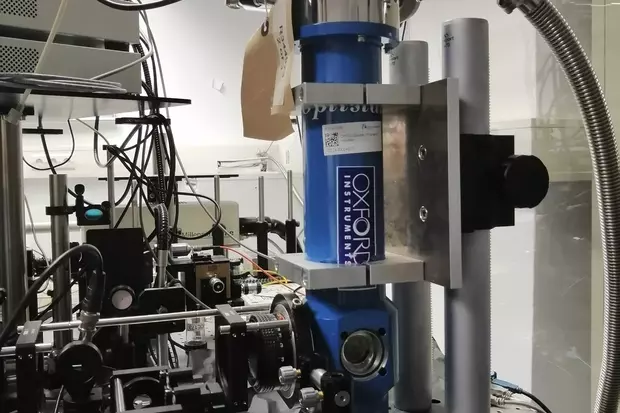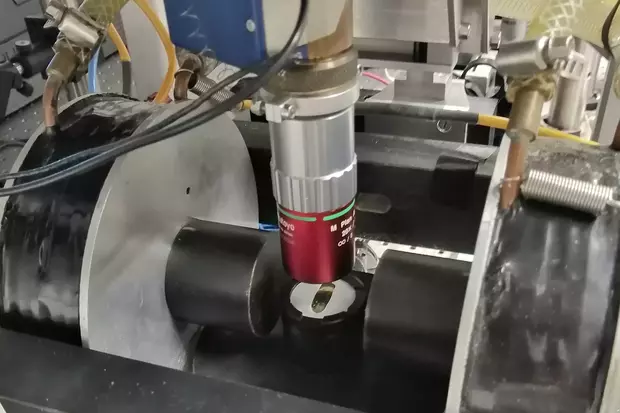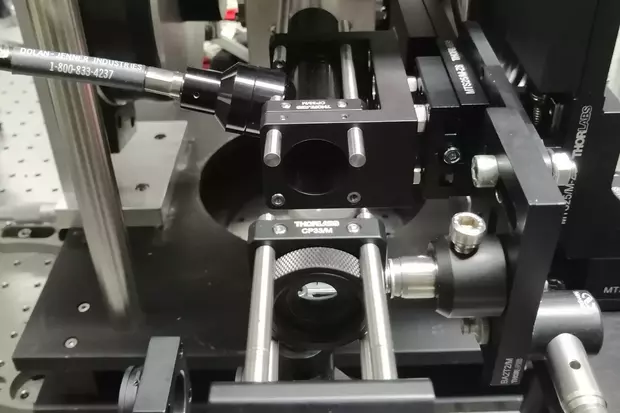Acousto-optoelectronic characterization labs
We operate three optical spectroscopy setups to study the optoelectronic properties of semiconductor nanostructures in the presence of dynamic acoustic fields. All setups include cryostats with optical access and radio frequency ports for excitation of acoustic resonators and monochromators for spectroscopic analysis. They are optimized for the study of various optical properties in the near-infrared spectral range.
Setup 1
Near-infrared continuous wave photoluminescence is used to study quasiparticles consisting of coupled photons and excitons (exciton-polaritons) confined in in III-V semiconductor heterostructures. The optical excitation is realized by a tunable Ti:sapphire laser (Matisse from Spectra-Physics) with emission in the range of 750-870 nm. Operation at cryogenic temperatures (down to 4 K) is realized by placing the sample in a continuous gas flow cryostat (Optistat CF from Oxford Instruments). In addition to a single grating monochromator (Aston SP2500 from Princeton Instruments) connected to a conventional charge coupled device (CCD) camera, this setup is also equipped with a streak camera (Optonics) for time-resolved photoluminescence measurements in the nanosecond range.
Setup 2
This photoluminescence setup is equipped with a Ti:saphire laser (Mira900 from Coherent) operating in the 780-840 nm range for both continuous and picosecond pulsed optical excitation of samples placed in a cold finger cryostat operating down to 10 K (Konti Cryostat from Cryovac). Spectroscopic characterization is performed in a triple grating monochromator (T64000 from Horiba) connected to either a time-integrated or a time-gated CCD camera (PicoStar HR from LaVision). It is also equipped with a Hanbury-Brown and Twiss (HBT) setup for the characterization of single photon sources, and with an electromagnet for the application of magnetic fields up to 150 mT to manipulate the spin degree of freedom of electronic excitations.
Setup 3
In this system, sample cooling is performed in a liquid helium cryostat capable of reaching temperatures down to 2 K (SVT-200 from Lake Shore Cryotronics). Optical excitation is performed with a tunable diode laser (TOPTICA) operating in the 765-805 nm range. Optical characterization is performed with a double grating spectrometer (Aston SpectraPro SP2500 from Princeton Instruments) connected to either a CCD camera or an HBT setup equipped with superconducting nanowire single photon detectors (Single Quantum) for fast photon counting and high detection efficiency.


